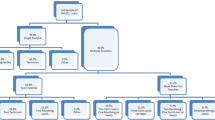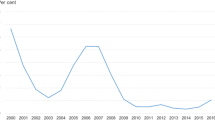Abstract
This paper examines the motivations for large firms to choose an Islamic loan over a conventional loan and the recent expansion of Islamic finance activities. We employ a dataset of Islamic and conventional syndicated loans from countries in the Middle East and Southeast Asia for the period 2001−2009, testing determinants for the choice of an Islamic loan at the facility, firm, and country level. From the lender’s standpoint, loan characteristics apparently do not influence the decision to offer Islamic loans nor are they rationed to borrowers in terms of maturity or amount. Moreover, firms taking Islamic loans do not appear to differ in terms of default risk from firms taking conventional loans. We identify three country-level determinants as potential driving forces expanding the preference for Islamic loans. The strongest determinant is the share of Muslim population in a country, but the quality of institutions and level of financial development also play substantial roles.
Similar content being viewed by others
Notes
BIS statistics on the signed international syndicated credit facilities provide information on the yearly volume of syndicated loans. The worldwide volume decreased from $2,770 in 2007 to $1,022.6 billion in 2009. It then increased to $2,492.2 billion in 2011 but fell to $1,840.5 billion in 2012. Figures for Saudi Arabia and Qatar show falls from $23.3 to $6.5 billion and from $21.7 to $2.8 billion, respectively, between 2007 and 2012. However, the volume of syndicated loans increased from $3.5 to $9 billion during that period in Indonesia and remained stable overall in Malaysia, with $13.4 billion in 2007 and $13.8 billion in 2012.
Available at www.govindicators.org
Data regarding the rule of law indicator are available for all years, with the exception of 2001. For 2001, we perform a linear interpolation between values for 2000 and 2002.
We also tested the use of the fraction of adherents to the Muslim religion in 1900 (which is included in this dataset). Gokcekus (2008) shows that the percentage of Protestants in 1900 has a greater impact on current corruption than the percentage of Protestants in 2000 because religion can influence economic outcome through tradition more than current practice. Thus, in a similar vein, we attempted to determine whether religious practice 100 years ago plays a greater role than current religious practice. The results are highly similar.
For instance, Pessarossi et al. (2012) use a sample of 92 syndicated loans for an analysis of foreign bank participation in syndicated loans in China.
Furthermore, the predictive quality of the model is also satisfactory when comparing the observed frequency of Islamic loans in the sample (mean: 0.20 and standard deviation: 0.40) to the predicted probability of Islamic loans, whose mean ranges from 0.1947 to 0.20 and standard deviation ranges from 0.13 to 0.26.
References
Abdul-Majid, M, Saal, D and Battisti, G . 2010: Efficiency in Islamic and conventional banking: An international comparison. Journal of Productivity Analysis 34 (1): 25–43.
Bae, K and Goyal, V . 2009: Creditor rights, enforcement and bank loans. Journal of Finance 64 (2): 823–860.
Baele, F, Farooq, M and Ongena, S . 2012: Of religion and redemption: Evidence from default on Islamic loans. Discussion Paper 2012-014, Tilburg University, Center for Economic Research.
Barth, J, Caprio, G and Levine, R . 2004: Bank regulation and supervision: What works best? a new database on financial development and structure. Journal of Financial Intermediation 13 (2): 205–248.
Beck, T and Demirgüç-Kunt, A . 2009: Financial institutions and markets across countries and over time: Data and analysis. World Bank Policy Research Working Paper 4943, May.
Beck, T, Demirgüç-Kunt, A and Merrouche, O . 2013: Islamic vs. Conventional banking: Business model, efficiency and stability. Journal of Banking and Finance 37 (2): 433–447.
Blominvest. 2009: Islamic banking in the MENA region. Blominvest Bank, February.
Cihak, M and Hesse, H . 2010: Islamic banks and financial stability: An empirical analysis. Journal of Financial Services Research 38 (2): 95–113.
Djankov, S, McLiesh, C and Shleifer, A . 2007: Private credit in 129 countries. Journal of Financial Economics 84 (2): 299–329.
Dollar, D and Kraay, A . 2003: Institutions, trade and growth. Journal of Monetary Economics 50 (1): 133–162.
El-Gamal, M . 2007: Incoherence of contract-based Islamic financial jurisprudence in the age of financial engineering. Rice University working paper.
Financial Times Special Report. 2009: The Future of Islamic Finance. 8 December.
Focarelli, D, Pozzolo, AF and Casolaro, L . 2008: The pricing effect of certification on syndicated loans. Journal of Monetary Economics 55 (2): 335–349.
Godlewski, C, Turk-Ariss, R and Weill, L . 2013: Do markets perceive sukuk and conventional bonds as different financing instruments? Journal of Comparative Economics 41 (3): 745–761.
Godlewski, C and Weill, L . 2008: Syndicated loans in emerging markets. Emerging Markets Review 9 (3): 206–219.
Gokcekus, O . 2008: Is it Protestant tradition or current Protestant population that affects corruption? Economics Letters 99 (1): 59–62.
Iqbal, A . 2007: Syndicated Islamic finance. Islamic Finance News, 2 November.
Kaufmann, D, Kraay, A and Mastruzzi, M . 2010: The worldwide governance indicators: A summary of methodology, data and analytical issues. World Bank Policy Research Working Paper No. 5430, World Bank.
Kuran, T . 2004: Islam and Mammon. Princeton University Press: Princeton.
Levine, R, Loayza, N and Beck, T . 2000: Financial intermediation and growth: Causality and causes. Journal of Monetary Economics 46 (1): 31–77.
Pessarossi, P, Godlewski, C and Weill, L . 2012: Foreign bank lending and information asymmetries in China: Empirical evidence from the syndicated loan market. Journal of Asian Economics 23 (4): 423–433.
Qian, J and Strahan, P . 2007: How laws & institutions shape financial contracts: The case of bank loans. Journal of Finance 62 (6): 2803–2834.
Srairi, SA . 2010: Cost and profit efficiency of conventional and Islamic banks in GCC countries. Journal of Productivity Analysis 34 (1): 45–62.
Visser, H . 2009: Islamic Finance: Principles and Practice. Edward Elgar: Cheltenham, UK and Northampton, USA.
Weill, L . 2011: Do Islamic banks have greater market power? Comparative Economic Studies 53 (2): 679–693.
Author information
Authors and Affiliations
Rights and permissions
About this article
Cite this article
Weill, L., Godlewski, C. Why Do Large Firms Opt for Islamic Loans?. Comp Econ Stud 56, 132–153 (2014). https://doi.org/10.1057/ces.2013.26
Published:
Issue Date:
DOI: https://doi.org/10.1057/ces.2013.26





